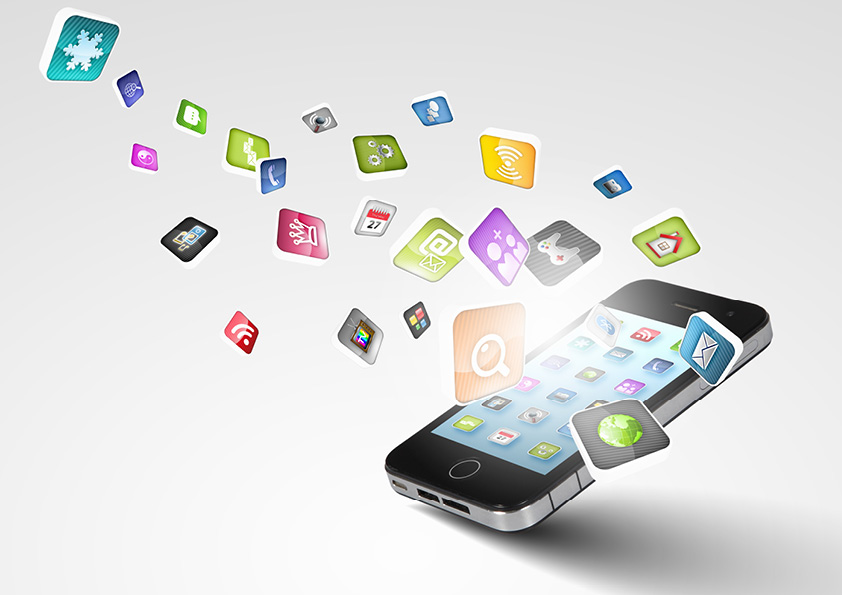It should come as no surprise that much of America loves mobile technology and is crazy for apps. While the numbers increase daily, as of January 2014, data from Pew Research showed that 58 percent of American adults have a smartphone and 42 percent own a tablet. A recent survey of more than 1,000 doctors and mid-level practitioners found that 86 percent of the clinicians use smartphones in their professional activities, in addition to 53 percent who use tablets at work.
And what are people doing on their mobile devices? A new report shows that time spent on a mobile device by the average U.S. consumer has risen to 2 hours and 42 minutes per day, with 86 percent of that time spent on apps. The data clearly shows that apps, considered a fad only a few years ago, are here to stay and exploding in popularity.
That’s true for both patients and doctors, as well. When it comes to health care, mobile apps can help people better manage their health and can give doctors access to useful information when and where they need it. According to industry estimates, 500 million smartphone users worldwide — including doctors — will be using a health care app by 2015. Here are some of the ways apps are impacting the health care space.
Health apps for doctors
Earlier this year, a team of ophthalmologists in Miami and China demonstrated the use of an iPhone-connected slit lamp to conduct an eye exam on a patient thousands of miles away in real-time. The potential this shows for early screening and increased access to patients is huge.
Not every doctor is using mobile technology for clinical purposes, however. In fact, most are not. A survey last year of more than 600 doctors by Deloitte found that 43 percent of doctors use smartphones or tablets for clinical purposes, including EHR access, e-prescribing, and physician-to-physician communication. Of the 57 percent of doctors that do not use their mobile devices for clinical purposes, 44 percent said that their work doesn’t provide mobile devices and they’re unwilling to use their own, 29 percent were concerned about patient privacy, and 26 percent said the apps and programs available weren’t suited to their needs.
A 2013 survey of about 1,400 physicians by American EHR Partners found that the top five most-used medical apps for smartphones and tablets are mainly reference and support tools that offer prescribing and safety information for drugs, procedure videos, medical calculators, and access to continuing medical education (CME) materials.
Health apps for patients
For all the enthusiasm over health apps — slated to become a $26 billion business by 2017 — some fear that the quality has not yet caught up with the quantity. There are currently more than 40,000 health- and medicine-related apps available in Apple’s App Store, but the IMS Institute for Healthcare Informatics found that fewer than 25 percent of these apps offered patients legitimate medical information. And since few doctors can provide guidance on health apps, patients are on their own to figure out an app’s relevance and usefulness. (This open letter to mobile health app developers explores some of the reasons patients reject these apps.)
As of last year, the FDA began regulating select categories of mobile medical apps that pose risks to patients if not used correctly. However, to date only a scant number of medical apps have received FDA approval. Privacy issues related to health apps are another troubling unknown.
Until concerns over safety and privacy are sufficiently addressed, some doctors are turning to ways that mobile apps can be helpful to health care right now. These include video consultations — such as the eye exam mentioned earlier — real-time patient satisfaction surveys, and point-of-service patient education tools.
Many doctors are already implementing patient education apps with great success. The advantages of these include the ability for patients to access these apps anywhere they are thinking about their health – in their doctor’s waiting room, on their smartphone at home, on their computer at work, etc. – and also the ease with which information can be shared with the patient’s family or caregivers. These apps can also help facilitate doctor’s exam-room interactions with patients and even boost compliance, since many people learn better with visual aids than with only oral or written instructions.
When the right apps are used to enhance — not replace — the doctor-patient relationship, mobile health technology can live up to its promise.
For more information on how apps are transforming health care, or for a demo of Rendia, get in touch today.

